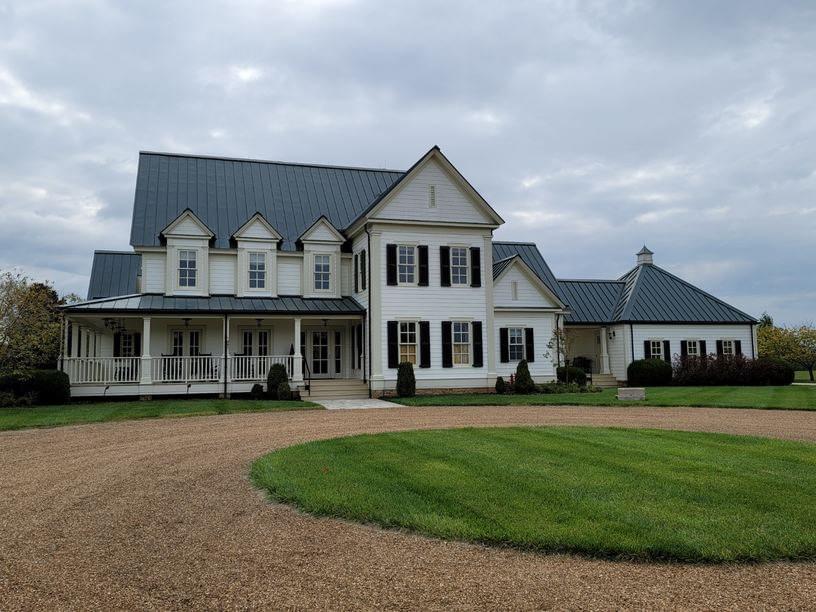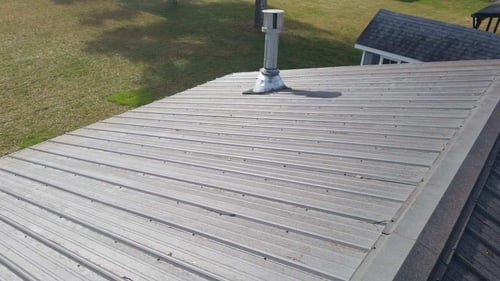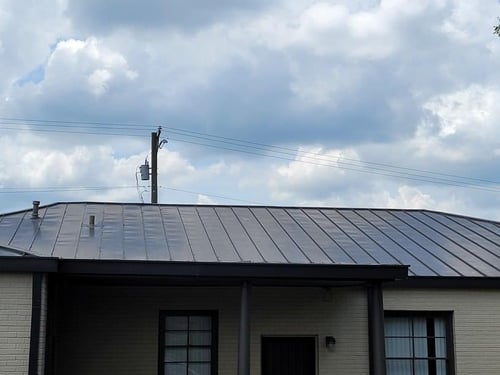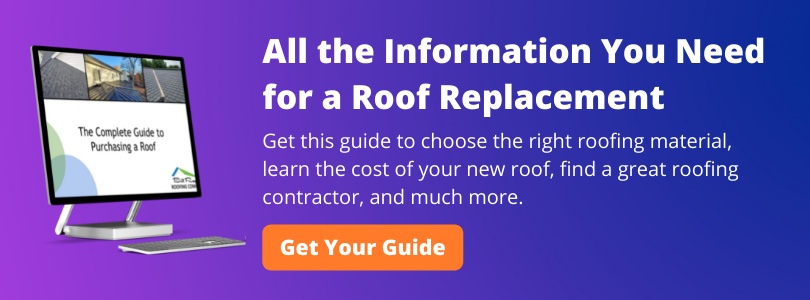What are the Disadvantages of a Metal Roof?

Deciding if a metal roof is right for your home is a big decision. Because it’s an important decision, you need to learn if it’s even the right fit for you.
But how do you do this? You can learn about all the great things a metal roof can offer you. However, knowing the disadvantages is the best way to learn if a metal roof is right for you .
For over 30 years, Bill Ragan Roofing has helped homeowners figure which roofing materials fit their needs. Now we’re going to help you learn if a metal roof is right for you.
To start this article, we’ll briefly cover the two types of metal roof systems to determine which one is recommended for residential roofing. After that, we’ll give you the 4 disadvantages of a standing seam metal roof.
And at the very end, we give you a guide that gives you all the advantages and disadvantages of the different roofing materials to help you even further with your decision-making process.
The two types of metal roofs?
While the two types of metal roof systems (standing seam and screw down panel) have their place in the industry, one is recommended for residential roofing.

A screw-down panel (also known as exposed fastener) metal roof is just what it's called; it's screwed down. The screws are screwed through the metal panels, which leaves no room for the metal to expand and contract as it goes through thermal expansion.
Because of this, you’ll pay to replace the screws every 5 years or so to prevent leaks or before a strong storm tears off the entire metal roof.
-2.jpg?width=500&name=StandingSeamResize%20(2)-2.jpg)
A standing seam metal roof system is a series of metal panels locked together at the seams or seamed mechanically. The metal panels are fastened under each of these ribs (standing seams), allowing them to glide back and forth when expanding and contracting.
You can get both types of metal roofs over your home. But a screw down metal roof is better used over a carport, garage, back screened-in porch, barn, commercial properties, and anywhere that’s not a living or workspace because of the lack of expansion and contraction.
On the other hand, a standing seam metal roof is a great option for every situation and is strongly recommended for use over a heated living or workspace. Because of this, a standing seam metal roof is the recommended choice for residential roofing.
The 4 disadvantages of a standing seam metal roof
I can give you the disadvantages of both types of metal roofs. But because you’re here, you’re probably considering a metal roof for residential reasons.
That’s why we’ll only be covering the disadvantages of a standing seam metal roof for the rest of this article.
1. It’s harder to repair a standing seam metal roof
The first disadvantage is that a standing seam metal roof is harder to repair. While standing seam metal roofs are durable, things can still happen to the panels.
This could be rusting from damage to the painted finish, storm damage, or damage from not walking on the metal panels correctly. But when one of the above happens, it takes experience and more skill to repair a standing seam metal roof than an asphalt roof and some other roof types.
It will also be more expensive to repair due to the difficulty and the skill it needs to do the job right.
2. Oil canning is a possibility in a standing seam metal roof
The next disadvantage for a standing seam metal roof is that oil canning is a possibility.

Oil canning occurs when installers fasten the metal panels too tightly together. If this happens, it gives the metal panels room to expand longways but no room to expand sideways.
Over time your standing seam metal roof will show signs of oil canning that starts with a “bubbling” look that eventually turns into a wavy look on the metal panels.
Be aware; oil canning doesn’t cause any functionality problems. But it does cause an aesthetic issue that some homeowners don’t like.
If curb appeal and aesthetics are a big deal to you, just know that oil canning is a possibility on a standing seam metal roof. To avoid this happening, hire a roofing contractor that has experience installing metal roofing.
3. The noise factor of a standing seam metal roof
The next disadvantage (and one of the most asked questions) is the noise factor of a standing seam metal roof. Just like oil canning, this isn’t a functionality problem with your metal roof.
No matter what, you will get an echo from the rain hitting your standing seam metal roof. But it’ll be quieter if it’s installed over solid decking because the wood (decking) between the metal panels and your ceiling helps absorb some of the noise.
You can also add wood fiber insulation boards between your roof’s decking and your metal panels to help with the noise. These boards will provide an extra layer to absorb sound, but they won’t completely block out a heavy downpour.
A standing seam metal roof will always make some noise when it rains. Even with what I mentioned above, it’s impossible to completely drown out the sound of rain when there's a heavy thunderstorm.
4. A standing seam metal roof is expensive
The last disadvantage (and biggest concern to homeowners) is that a standing seam metal roof is expensive. Let’s compare the cost of the most commonly used asphalt shingle (architectural) roof to the cost of a standing seam metal roof as an example.
A two-story house with architectural (dimensional) asphalt shingles that has a little complexity, good accessibility will cost around $4.76 per square foot. You can expect a standing seam metal roof to be more than double and almost triple the cost at around $15.00 per square foot.
When most homeowners hear this, they avoid a metal roof and go with asphalt. But if you want a roof you won’t have to worry about for the next 50 years, a standing seam metal roof is great if you have the budget.
The guide that has all the advantages and disadvantages of different roofing materials
Now you know the disadvantages of a standing seam metal roof. Remember, you still can get a screw down metal panel roof over a heated living space, but I don’t recommend it.
After reading this article, you should have a good idea if a standing seam metal roof is an option for you.
But what about the advantages? Or what about the advantages and disadvantages of other types of roofing materials?
That’s exactly what The Complete Guide to Purchasing a Roof is for. The buyer’s guide includes the advantages and disadvantages of different roofing materials, how much your roof will cost, how to hire a great roofing contractor, and more.
Make the right purchasing decision and learn everything you need to know about your roof replacement by getting The Complete Guide to Purchasing a Roof now.
The team at Bill Ragan Roofing has provided high-quality metal roofing services to homeowners in Nashville and surrounding areas since 1990. No matter what your roof needs, you can count on us to provide education, guidance, and quality workmanship backed by a lifetime warranty.
If you’re local to Nashville, Brentwood, Franklin, Belle Meade, Sumner county, and other surrounding areas, don’t hesitate to contact us today.
Here’s The Complete Guide to Purchasing a Roof to help you find the right roofing material, hire a great roofing contractor, and so much more.


